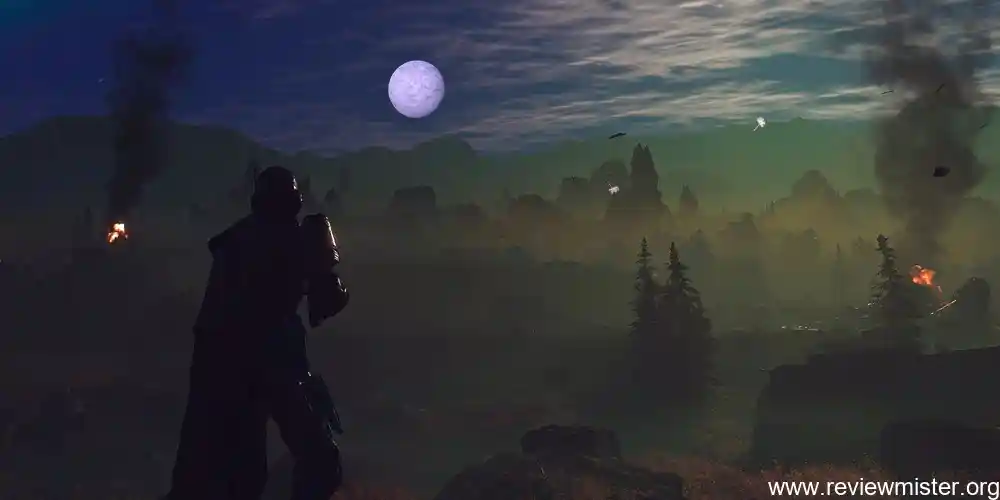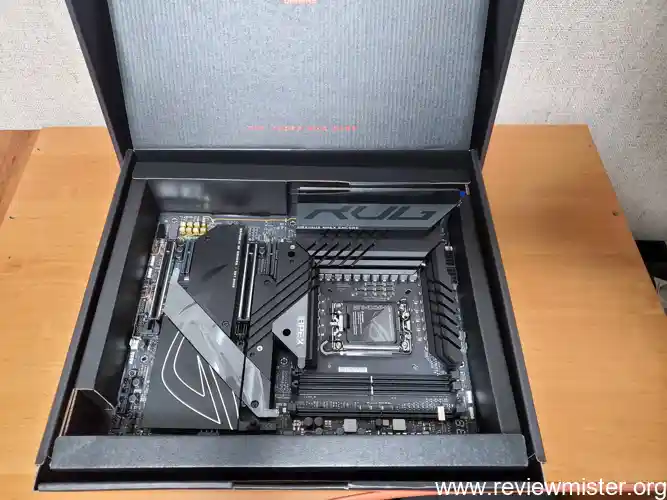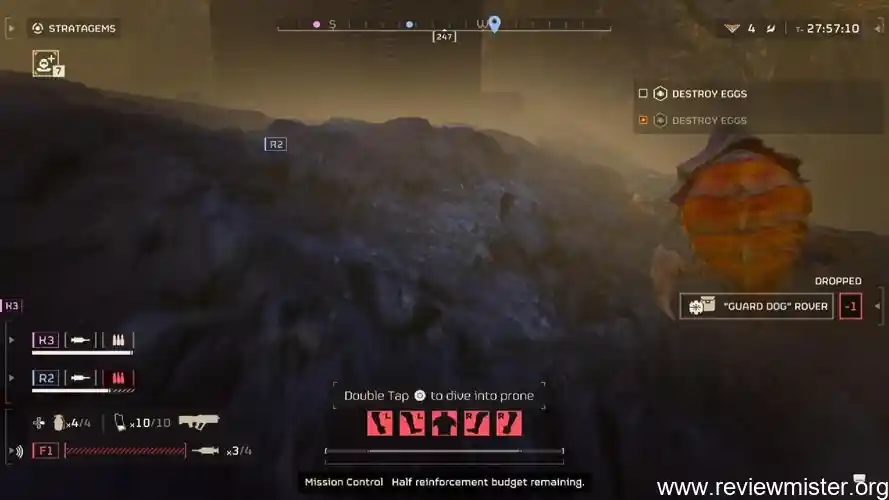When I first dove into Helldivers 2, the game’s difficulty levels immediately stood out as a core part of the experience, shaping not just how challenging each mission felt but also how rewarding and dynamic the gameplay became. For you as a player, understanding these difficulty levels isn’t just about setting a higher challenge—it’s about how every aspect of the game adjusts to your choice, from enemy AI behavior to the loot and progression systems that keep you coming back for more. Whether you’re teaming up with friends or tackling missions solo, the way Helldivers 2 balances risk and reward across its various difficulties directly impacts your strategies, your squad’s cooperation, and your long-term engagement with the game. By looking closely at how these difficulty tiers are structured, what mechanics shift at each level, and how player preferences influence the overall experience, we can see why Helldivers 2 continues to foster such a dedicated and diverse community.
What Are the Difficulty Levels in Helldivers 2?
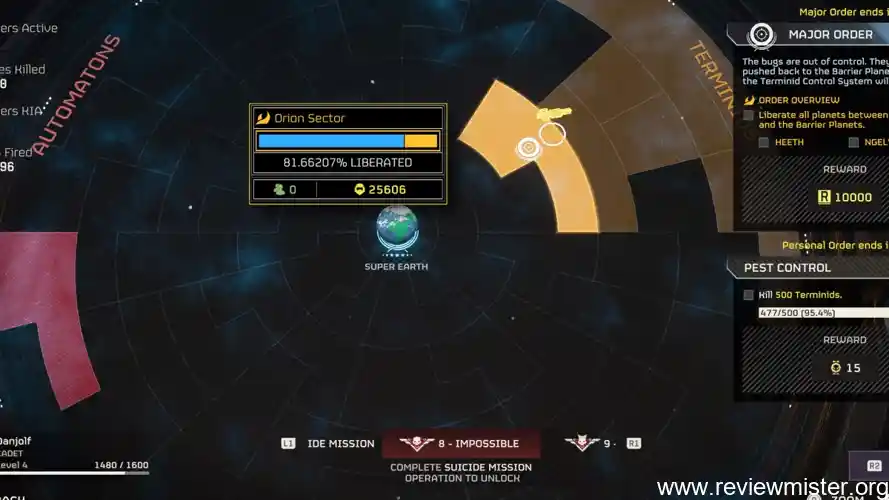
When you and I jump into Helldivers 2, one of the first things we notice is how the game lets us pick from a range of difficulty levels, each offering a distinct challenge and shaping our overall experience. These helldivers 2 difficulty levels aren’t just about cranking enemy numbers up or down; they’re a core part of what makes each mission feel fresh and rewarding. Whether you prefer a relaxed stroll through the galaxy or crave the chaos of punishing opposition, the game gives us options to match our playstyle and mood. Choosing the right difficulty isn’t just a setting—it’s the heartbeat of every mission we take on together.
How Many Difficulty Levels Exist in Helldivers 2?
When you dive into Helldivers 2, the variety of difficulty levels lets you tailor the challenge to match your playstyle and mood. Whether you’re just starting out or you’re craving a brutal test, the game has you covered with a range of options that impact everything from enemy strength to mission objectives. Choosing the right difficulty isn’t just about bragging rights—it shapes how intense each mission feels and how much teamwork you’ll need. As you get comfortable, bumping up the difficulty can turn even familiar missions into adrenaline-fueled chaos that keeps you and your squad on your toes.
What Are the Names and Descriptions of Each Difficulty Level?
If you’re jumping into Helldivers 2, you’ll quickly notice that the helldivers 2 difficulty levels aren’t just for bragging rights—they completely shape your experience. Each tier, from the more forgiving early stages to the punishing higher difficulties, ramps up enemy threats, mission objectives, and even the need for teamwork. It’s not just about tougher enemies; it’s about how you adapt and strategize. You’ll find that the right difficulty level makes all the difference, whether you’re looking for a laid-back run or a true test of coordination and grit with your squad. Choosing wisely can make or break your mission.
How Do Difficulty Levels Affect Gameplay Parameters?
When you jump into Helldivers 2, you’ll quickly notice that the helldivers 2 difficulty levels aren’t just for show—they actually set the pace and tone for every mission you take on. From the more forgiving lower tiers to the brutal challenges at higher levels, each difficulty changes up the enemies you’ll face, the intensity of battles, and even how you’ll need to work with your squad. It’s not just about cranking up the heat for bragging rights; these levels give you a real sense of progression and let you tailor the game to how much chaos you can handle.
How Does Enemy AI Scale with Difficulty in Helldivers 2?

When you bump up the helldivers 2 difficulty levels, you’ll notice the enemy AI doesn’t just get a health boost—it gets a lot smarter and nastier. Suddenly, those bugs and bots you were mowing down before start flanking you, swarming in bigger groups, and reacting way faster to your moves. It’s like the game knows you’re up for a challenge and throws every trick in the book at you. You and your squad really have to watch each other’s backs, because the AI starts using more aggressive tactics and unpredictable patterns, making every mission feel like a real battle for survival.
Which Enemy Types Change Across Difficulty Levels?
When you ramp up the Helldivers 2 difficulty levels, you’ll notice enemy AI isn’t just about throwing more bugs or bots at us—it’s about making them smarter, faster, and more relentless. On easier settings, enemies might feel like cannon fodder, but as you climb the ranks, they coordinate attacks, flank your squad, and react to your tactics. You’ll find that your usual tricks don’t always work, and enemies become less predictable and way more aggressive. This scaling means you can’t just breeze through higher tiers; you’ve got to stay sharp and adapt, or you’ll get overrun before you know it.
How Do Spawn Rates and Aggression Vary?
When you ramp up the Helldivers 2 difficulty levels, you’ll notice the enemy AI doesn’t just hit harder—it actually gets a lot smarter and more relentless. On lower settings, you might find enemies hanging back or attacking in predictable waves. But crank up the challenge, and suddenly they’re flanking, swarming, and reacting to your every move. It feels like they’ve had a few cups of coffee and are out to get you personally! You and your squad will have to stay sharp because the enemy’s aggression, coordination, and numbers all scale up, making each mission a true test of teamwork and tactics.
What Research Details Enemy Scaling Mechanisms?
When you bump up the Helldivers 2 difficulty levels, you’ll notice the enemy AI doesn’t just get more health—it gets a lot smarter and more relentless. Suddenly, those basic bugs or bots start flanking, calling reinforcements, and reacting faster to your movements. I’ve found that on higher tiers, enemies coordinate their attacks, use cover, and even prioritize you or your squad based on threat level. This means you can’t just rely on the same tactics; you have to adapt quickly because the AI is constantly testing your teamwork and reflexes. It really keeps you on your toes, making every mission feel tense and rewarding.
What Rewards and Progression Are Tied to Difficulty Levels?
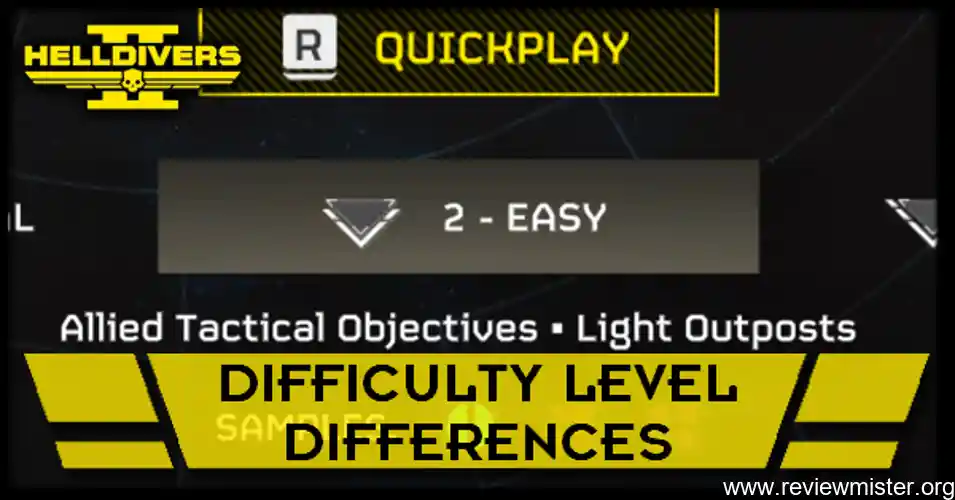
When you crank up the helldivers 2 difficulty levels, it’s not just about making things harder for the sake of a challenge—it’s about unlocking better rewards and progressing faster. The higher you go, the sweeter the loot gets, whether that’s extra medals, rare stratagems, or exclusive cosmetics that let you stand out on the battlefield. I know it can feel daunting, but pushing yourself up the ranks actually speeds up your overall growth in the game. It’s a bit like lifting heavier weights at the gym: tougher, yes, but you walk away stronger and with a few more bragging rights to show for it.
How Do Mission Rewards Change by Difficulty?
When you bump up the helldivers 2 difficulty levels, you’re not just signing up for a tougher fight—you’re also unlocking bigger and better rewards. I’ve noticed that higher difficulties bring in more experience points, rare medals, and unique gear that you can’t snag on easier settings. This means your progression feels way more satisfying because you’re working towards exclusive equipment and bragging rights. Plus, the challenge itself becomes a reward, pushing you and your team to coordinate better and try out new tactics. So, if you’re hungry for both loot and a sense of accomplishment, cranking up the difficulty is the way to go.
What Progression Systems Incentivize Higher Difficulties?
When you ramp up the Helldivers 2 difficulty levels, you’re not just cranking up the challenge—you’re also boosting your potential rewards. Higher difficulties typically mean better loot, more medals, and increased experience points, giving you a real incentive to push your limits. You’ll find that progression systems, like unlocking new weapons, armor, or even special stratagems, often tie directly to tackling tougher missions. It’s a bit like climbing a mountain: the view (or in this case, the loot) gets better the higher you go. If you want the coolest gear and bragging rights, those challenging levels are where you’ll earn them.
What Data Links Difficulty with Player Retention?
When you crank up the Helldivers 2 difficulty levels, you’re not just asking for a tougher fight—you’re setting yourself up for bigger rewards and faster progression. On higher difficulties, you and your squad will rack up more experience points, earn better loot, and get access to exclusive medals or currency drops that you simply won’t see in easier modes. It’s a real risk-versus-reward scenario: the missions are harder, but the payoff is way sweeter. If you want to level up your gear and unlock those top-tier upgrades, pushing into the tougher tiers is where you’ll see the biggest jump in both challenge and rewards.
How Do Player Strategies Shift by Difficulty Level?
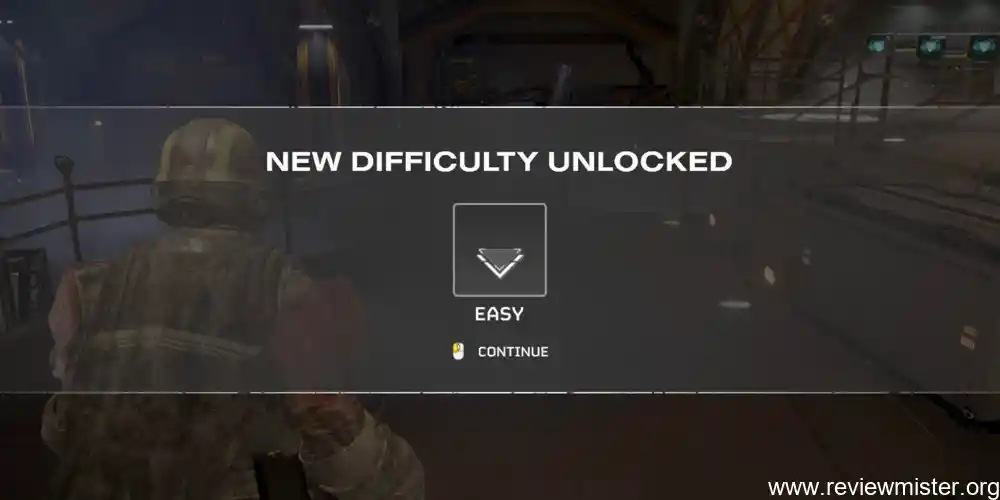
When you dive into Helldivers 2 difficulty levels, you’ll quickly notice that the way you play has to adapt if you want to survive. At lower difficulties, you and I can usually get by with a casual approach and basic teamwork, but as the challenge ramps up, we’re forced to rethink our tactics. Suddenly, every piece of equipment matters, and communication isn’t just helpful—it’s essential. You might find yourself switching loadouts or coordinating with your squad more tightly, because what worked before just won’t cut it anymore. It’s like turning up the heat in the kitchen; if we don’t adjust, we’ll definitely get burned.
What Team Compositions Are Effective per Difficulty Tier?
As you tackle different Helldivers 2 difficulty levels, your approach has to evolve fast. On lower settings, you might get away with running and gunning, but as the challenge ramps up, teamwork and communication become your best weapons. I’ve found that higher difficulties demand more specialized roles—maybe you focus on heavy weapons while your squadmate keeps everyone healed. You’ll notice equipment selection gets more critical, too; suddenly, the right stratagem or support tool can mean the difference between victory and a squad wipe. Basically, the tougher the setting, the more you’ll need to coordinate, adapt, and rethink your usual tactics.
How Does Equipment Selection Change?
When you step up the Helldivers 2 difficulty levels, your whole approach needs to evolve. On the easier settings, you and your squad can get away with bold moves and quick runs, but as the challenge ramps up, every decision matters more. You’ll notice that team coordination, careful equipment choices, and constant communication become your lifeline. Suddenly, it’s not just about firepower—it’s about covering each other, using stratagems wisely, and adapting to enemy tactics on the fly. If you’re like me, you’ll find yourself planning ahead, trusting your team more, and celebrating even the small victories together.
What Cooperative Mechanics Gain Importance?
When you move up through the Helldivers 2 difficulty levels, your approach has to evolve just as quickly as the threats you face. At lower difficulties, you and your squad might get away with charging in guns blazing, but as things heat up, strategy is everything. Suddenly, careful team composition matters a lot more—maybe you need someone with heavy firepower, another with support tools, and someone keeping an eye on objectives. You’ll find yourself thinking twice about which Stratagems to equip, since the right gear can mean the difference between victory and a quick defeat. Communication, coordination, and adaptability become the real game-changers as the challenge ramps up.
What Studies Exist on Difficulty and Player Engagement in Helldivers 2?
When you and I tackle the various Helldivers 2 difficulty levels, it’s not just about cranking up the chaos—it’s also about how we engage with the game itself. There’s actually a growing interest in how these difficulty settings shape our play sessions and keep us coming back for more. Whether it’s players seeking a punishing challenge or just wanting a casual romp with friends, studies and community surveys are starting to dig into how different levels impact our satisfaction, session lengths, and even our preference for team strategies. Your experience with these settings might be more influential than you think!
What Surveys Show Player Preferences for Difficulty?
If you’ve ever wondered how helldivers 2 difficulty levels affect player engagement, you’re not alone. There are several community-driven surveys and developer insights that dig into how players react to ramping challenge. For example, many of us find that our session length actually increases as the difficulty rises, since tougher missions demand more planning and teamwork. Some players prefer the adrenaline rush of higher difficulties, while others stick to moderate settings for a more relaxed experience. What’s clear from these studies is that flexible difficulty options keep more of us coming back, tailoring the gameplay to our own sweet spot for fun and challenge.
How Does Difficulty Influence Session Length?
If you’re curious about what research says on helldivers 2 difficulty levels and how they affect player engagement, you’re not alone. While there aren’t a ton of academic studies focused solely on Helldivers 2 yet, player surveys and community data already show a strong link between challenging gameplay and how long we stick around. You and I both know that as the difficulty ramps up, so does the sense of accomplishment—and that keeps us coming back for more. Developers also gather feedback from us to fine-tune those levels, making sure there’s a sweet spot that keeps everyone engaged, not frustrated.
What Academic Research Explores Difficulty Tuning?
If you’re curious about how Helldivers 2 difficulty levels impact your engagement as a player, you’re not alone—there’s a growing interest in understanding what keeps us coming back for more. Recent player surveys and community feedback highlight that many of us prefer a challenge that feels fair yet rewarding, which directly influences how long we stick around in the game. Some studies even suggest that when difficulty settings are well-tuned, we tend to play longer sessions and feel a greater sense of accomplishment. While academic research specific to Helldivers 2 is still emerging, it’s clear that difficulty balancing is key to both enjoyment and player retention.
Which Accessibility Features Support Different Difficulty Levels?
When you’re diving into Helldivers 2 difficulty levels, accessibility features can make a world of difference for us as players. Whether you need aim assist, customizable controls, or visual aids, these options let you fine-tune the experience so it feels just right. It’s not just about making the game easier—it’s about making sure everyone can join in, regardless of skill or physical ability. I’ve noticed that when you and I can tweak settings like text size or toggle rapid button presses, it removes barriers and keeps the fun front and center, no matter which difficulty we choose.
What Options Adapt Difficulty for Different Player Needs?
If you’re like me, you want everyone on your squad to enjoy Helldivers 2, no matter their skill or experience. That’s why the accessibility features tied to Helldivers 2 difficulty levels matter so much. You can tweak things like aim assist, subtitles, and colorblind modes, making sure you and your friends can focus on the action, not on struggling with the interface. Adjustable difficulty lets us set the right challenge, while features like rebindable controls or visual cues ensure nobody’s left out. It’s all about making the chaos of Helldivers 2 open to more players, so everyone can dive in and have fun.
How Do Assistive Settings Interact with Game Balance?
When you’re looking at helldivers 2 difficulty levels, it’s clear the game is designed to welcome all kinds of players thanks to its accessibility features. You and I can tweak things like aim assist, colorblind modes, and subtitles, making missions smoother no matter our preferences or needs. These settings aren’t just afterthoughts—they let us adjust the challenge to suit our skills, so you don’t have to feel left out if you need a little extra help. Whether you’re ramping up the chaos or dialing things back, these tools make sure everyone can dive in and stay engaged.
What Evidence Shows Accessibility Improves Engagement?
When you’re dealing with Helldivers 2 difficulty levels, it’s great to know the game doesn’t leave anyone behind. If you or your friends need extra help, you’ll find adjustable options like aim assist, visual cues, and customizable controls that let you tailor the challenge to your comfort level. You can tweak things like HUD visibility or enable colorblind modes, which makes sure we all get a fair shot at tackling tougher missions. These features work seamlessly, so whether you’re ramping up the difficulty or dialing it down, the experience stays balanced and enjoyable for every player in your squad.
Q1. What are the different difficulty levels available in Helldivers 2?
Ans: Helldivers 2 offers multiple difficulty levels ranging from “Trivial” to “Helldive,” allowing players to choose their preferred challenge.
Q2. How does increasing the difficulty level affect gameplay in Helldivers 2?
Ans: Higher difficulty levels introduce tougher enemies, more objectives, and increased friendly fire risks.
Q3. Can I change the difficulty level mid-mission in Helldivers 2?
Ans: No, the difficulty level must be chosen before starting a mission and cannot be changed during it.
Q4. Do higher difficulty levels in Helldivers 2 offer better rewards?
Ans: Yes, completing missions on higher difficulty settings grants better loot and more experience points.
Q5. Is it recommended to play Helldivers 2 on higher difficulty levels solo?
Ans: Playing on higher difficulties is best tackled with a full team due to increased challenge and enemy density.

